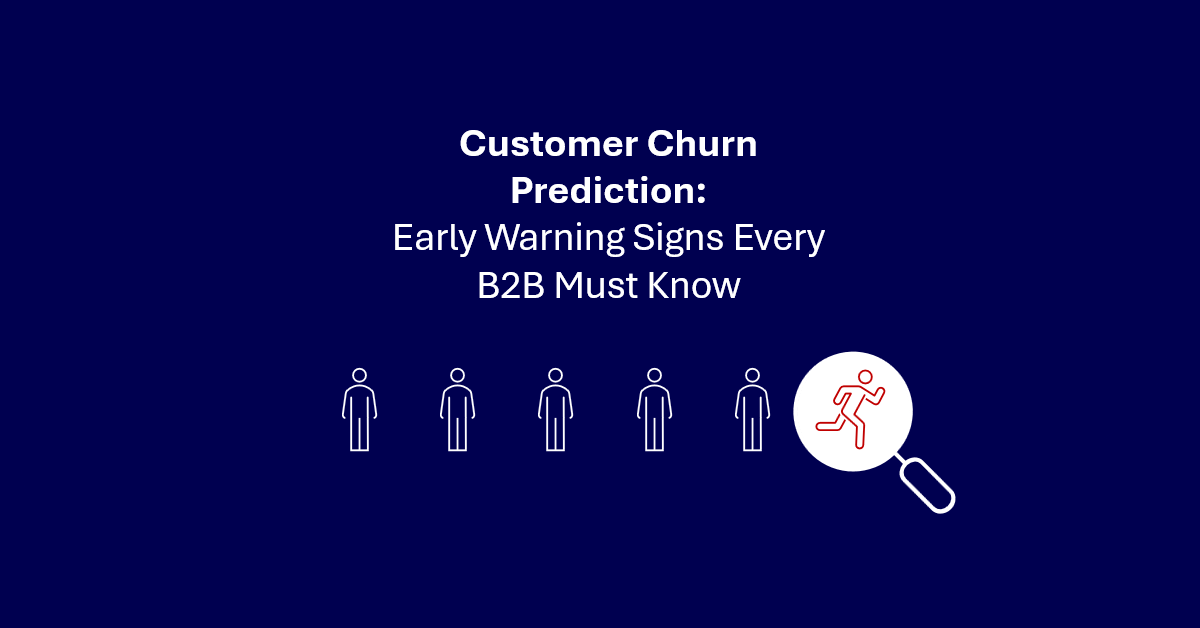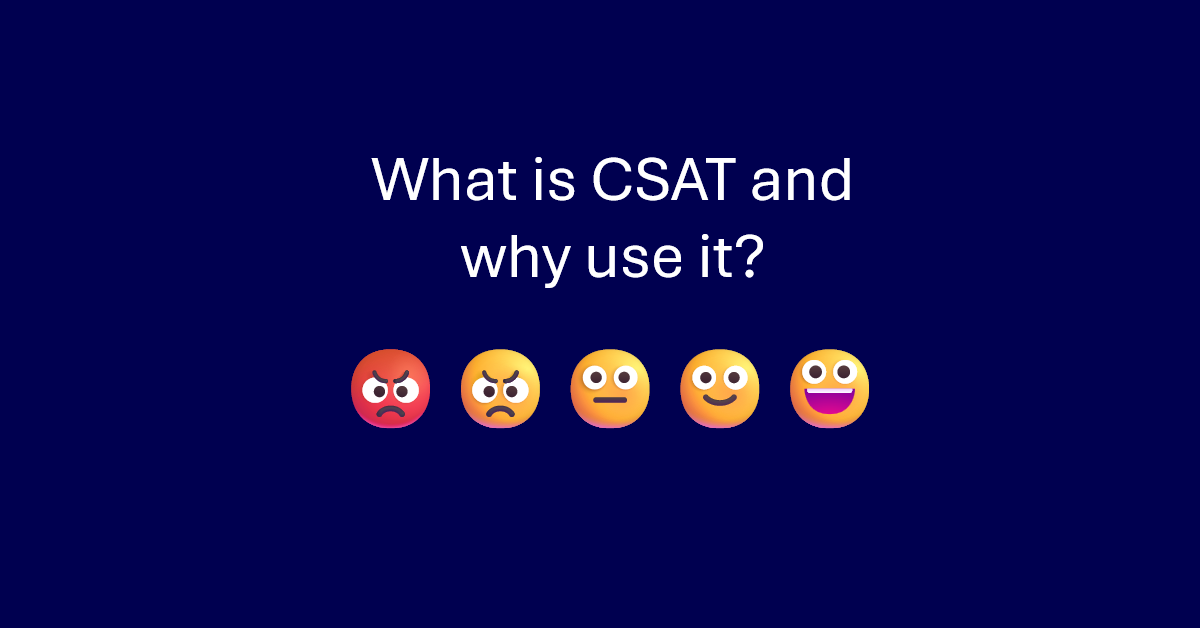
5 Smart NPS Follow-Up Questions That Get Results
The Net Promoter Score (NPS®) has earned its place as one of the most widely adopted customer feedback tools, offering a simple yet powerful snapshot of customer loyalty. But the magic of NPS doesn’t come from the score itself - it comes from what you do next.
Asking customers “How likely are you to recommend us to a friend or colleague?” gives you a quantitative read on sentiment. But alone, it’s one-dimensional. To turn NPS into a genuine driver of growth, retention, and customer-centric decisions, it should be paired with well-crafted follow-up questions that reveal the “why” behind the number.
In this post, we explore 5 smart NPS follow-up questions that unlock deep insight, help predict customer behaviour (like churn, likelihood of repeat purchase or growth intention), and offer alignment with complementary measures like Customer Satisfaction (CSAT). We’ll also cover how to structure and time your questions for optimal response and value.
Why Follow-Up Questions Matter
Before we dive into the questions themselves, it’s worth reiterating why NPS follow-ups are so important.
- NPS is directional, not diagnostic. It tells you how loyal a customer feels, but not what’s driving that sentiment. Great for benchmarking, not so great for understanding.
- Good follow-up questions surface themes — from product feedback to service frustrations — that allow for improvement.
- They segment risk and opportunity. Not all detractors are lost causes, and not all promoters are primed for referrals.
- They drive prioritised action by linking customer sentiment to churn, upsell, or retention efforts or success.
- Measuring NPS is only one part of the mix; the data should be used to drive customer experience improvements, and this requires going deeper.
But not all follow-up questions are equal. The best ones are easy to answer, open-ended but focused, and tailored to the score group (promoters, passives, detractors).
Structuring the NPS Flow: A Brief Overview
A strong NPS survey should follow this sequence:
- NPS Question (Quantitative):
“On a scale from 0–10, how likely are you to recommend our company to a friend or colleague?” - Open-Ended Follow-Up (Qualitative):
Tailored based on score, this is where you dig into the why. - Optional Diagnostic or CSAT Alignment Questions (Optional Quantitative/Qualitative):
Short, purposeful extras that reveal expectations vs. experience, satisfaction, or future behaviour.
The 5 Smart Follow-Up Questions
Here are five well-crafted follow-up questions that work well across sectors, especially in B2B environments. These questions can be dynamically delivered based on the NPS score bracket (0–6 detractors, 7–8 passives, 9–10 promoters) and adapted to suit your product or service.
1) “What is the main reason for your score?”
Why it works:
This is the single most effective and flexible follow-up question. It's simple, open-ended, and directly invites the customer to explain their reasoning in their own words.
Best used with: All respondents (promoters, passives, and detractors).
What you’ll learn:
- The emotional drivers behind the score.
- Product issues or standout features.
- Expectations vs. reality.
- Gaps or issues in your customer experience.
How to make it better:
Tag responses by theme (e.g. pricing, product quality, support) using text analytics or manual coding. This enables prioritisation and trend detection across the base.
🔍 Example Insight: “I love the platform’s features, but support response times have been slow.” (Passive, score = 7; issue = support)
2) “What’s the one thing we could do to improve your experience?”
Why it works:
Improvement questions push customers to focus on what would move them from detractor to promoter or from passive to promoter. It’s future-oriented and action-driven.
Best used with:
Detractors (0–6) and passives (7–8) but can be useful with promoters too.
What you’ll learn:
- Specific expectations or pain points.
- Quick wins vs. larger systemic issues.
- Ideas directly from customers that might not surface otherwise.
- Potential areas of innovation and perhaps even future growth.
How to make it better:
There is the potential to use multiple-choice options with an “Other” field if you want to guide the response (e.g. “Better pricing”, “Faster delivery”, “More training resources”), however we like the freedom of open-ended questioning; your choice will likely stem from your ability to analyse the responses.
💡 Tip: Responses from passives are especially valuable here — they’re not upset, but they’re not loyal either. These customers are ripe for conversion and are a potential goldmine of information.
3) “Have you ever recommended us to someone else?”
Why it works:
This helps validate NPS as a predictor of behaviour — not just sentiment. Promoters say they would recommend, but have they? This question adds a behavioural lens.
Best used with: Promoters (9–10).
What you’ll learn:
- Actual referral activity vs. stated intention.
- Opportunity to activate word-of-mouth campaigns.
- Gaps between willingness and action.
- Often makes customers think more deeply about your company.
How to make it better:
Follow up with “Would you be willing to provide a testimonial?” or direct them to your referral program.
🎯 Example: A customer who scores 10 but has never referred might need a nudge or an incentive, or could be a good target for a follow up Voice of the Customer (VoC) interview to deep dive and understand how they are really feeling.
4) “How satisfied are you with [specific element]?”
Why it works:
NPS gives an overall loyalty measure, but satisfaction with specific touchpoints, for example onboarding, product quality or support, gives context and helps locate the issue.
Best used with: All respondents, especially when diagnosing low scores or validating high ones.
What you’ll learn:
- Misalignment between customer experience areas.
- High-level NPS may mask low satisfaction with certain teams.
- Good alignment with CSAT-style benchmarking.
How to make it better:
Ask this as a 5-point scale (1 = Very dissatisfied, 5 = Very satisfied), then optionally follow up with a short open text field for detail.
⚖️ Link to CSAT: NPS and CSAT can work well together. A promoter (NPS = 9) may still be dissatisfied with support (CSAT = 2). This gap is where churn or negative word-of-mouth can begin.
5) “What are your plans for using our product/service in the next 12 months?”
Why it works:
This uncovers forward-looking behaviour, from risk of churn to likelihood of upsell. It aligns with account planning and growth strategy.
Best used with:
All segments, but especially passives and promoters.
What you’ll learn:
- Churn risk (e.g., “We’re reviewing suppliers”).
- Upsell signals (e.g., “We plan to expand usage”).
- Potential need for relationship building (e.g., “Unsure”).
- Customer lifecycle phase insights (e.g. is a long-term customer moving to an advocate or becoming a churn risk?).
How to make it better:
Offer pre-set answer ranges (e.g., “We’re reducing usage”, “Staying the same”, “Expanding to new teams”, “Unsure”) and allow for comments.
🔄 Pro tip: When this is paired with account data (usage, contract status), you can proactively intervene with success, renewal, or expansion support.
Bonus Tactic: Combining Measures for Alignment
While NPS is about measuring loyalty and advocacy, CSAT is about measuring customer satisfaction at specific touchpoints. They serve different but complementary purposes.
Here’s how to use them together:
- Use CSAT after key interactions (support tickets, onboarding, training).
- Use NPS quarterly or post-purchase to track overall sentiment.
- Compare results. For example:
- Low CSAT + Low NPS = At-risk customer.
- High CSAT + Low NPS = They like the service but may not see overall value.
- High NPS + Low CSAT = They’re loyal, but recent experiences are slipping.
- High CSAT + Low NPS = They’re loyal and happy; they could become an advocate for your business.
This dual approach lets you spot disconnects and act fast.
Tips for Better NPS Survey Design
- Keep it short: Limit to 3–5 questions max.
- Mobile-friendly: Most surveys are now answered on mobile.
- Personalise when possible: “Thanks for being with us for 2 years, [Name]. We’d love your feedback.”
- Follow-up: Let respondents know their feedback has been read and acted upon.
- Embed into company culture: Customer feedback should become part of business as usual, not a stand-alone activity carried out once a year. The results should feed directly into actions plans for the business to improve the customer experience.
Turning Insights Into Action
Great follow-up questions mean nothing if they don’t lead to action.
Here’s a simple workflow:
- Tag and theme responses. Use text analytics tools or manual tagging.
- Share insights regularly. Create digestible summaries for different teams (e.g., product, sales, support).
- Close the loop. If a customer raises a concern, follow up personally and ensure it is closed out to their satisfaction, or explain if not possible.
- Track improvement. Monitor how feedback themes shift over time.
📊 Tip: Build a dashboard that tracks NPS over time alongside common themes and business actions taken.
Final Thoughts
NPS is only as powerful as the conversations it starts. By asking smart, targeted follow-up questions, you shift the score from a vanity metric to a true voice-of-the-customer engine. Whether you’re identifying churn risk, uncovering referral potential, or flagging product improvements, these questions turn vague feedback into precise action.
If you’re not already using these follow-up questions or if your NPS program feels flat, now’s the time to evolve your approach. Insight comes not just from what you ask, but how you listen and act.
Looking to Improve Your NPS Program?
At Kinvale, we help B2B companies design NPS programs that deliver results. From survey design to insight dashboards and follow-up workflows, we can help you turn customer feedback into fuel for growth.
👉 Contact us for a free consultation.
NPS, Net Promoter, Net Promoter Score and related terms are registered trademarks of Satmetrix Systems, Inc., Bain & Company and Frederick Reichheld.


